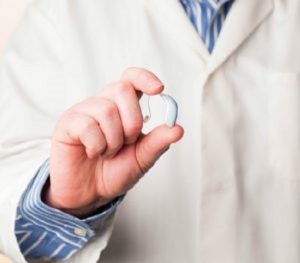
An audiologist can help you determine which assistive listening devices are best for your specific case of hearing loss.
When you are suffering from hearing loss, there are a variety of different options available to help. The type of assistive listening device that you choose depends on the severity of your hearing loss as well as the type. Here are some of the different types of assistive listening devices.
Personal Amplifiers
These assistive listening devices consist of a small box with a microphone and cord attached to it. They are best used for a one-on-one conversations that take place in person. The person you are talking to simply attaches the microphone to them so that you can hear them clearly and rid of the background noise. These assistive listening devices are very affordable, but can be inconvenient due to the fact that you have to use a wire.
FM Systems
This device allows you to be more mobile than a personal amplifier and also helps you to hear distant sounds. It uses radio technology to bring sounds closer to you. A portable receiver is worn to allow you to hear the speaker, which can bring in sounds from up to 150 feet. This assistive listening device is good for classrooms or outdoor activities. Because of its flexibility, it is a little more costly than a personal amplifier.
Infrared Systems
These assistive listening devices work similarly to the FM systems. The difference is that instead of radio technology, it uses light waves to transmit sound. These systems offer a lot of privacy and are good for places like doctors offices. The downside to an infrared system is that if any person or object gets in the way of the listener and the sound source, the signal can be blocked. Sunlight can also impact the signal, so these systems don’t offer the same versatility as FM systems.
Bluetooth
With modern technology comes an assistive listening device that can work through bluetooth. This type allows mobile devices to be able to communicate with a wireless hearing aid. Though the range is only about 20 feet, the connection is great and there is rarely ever any interference. You can also switch back and forth between multiple devices when using it.
Contact Bay Area Audiology Today for Your Assistive Listening Device!
Ready to do something about your hearing loss? Our Doctor of Audiology, Dr. Trisha A. Bents Muth, is exceptionally experienced in the art of audiology, and provides the absolute best solutions. Bay Area Audiology has been working to give patients a comfortable environment, with thorough evaluations. We are independently owned, and unbiased when it comes to finding you the care you need.
You can always come into the office, or contact us in advance to set up an appointment. We also provide updates on our social media websites. You can check out our Facebook,Twitter,
Google+, LinkedIn, and Pinterest to keep up with Bay Area Audiology.
Don’t hesitate–we can help.
